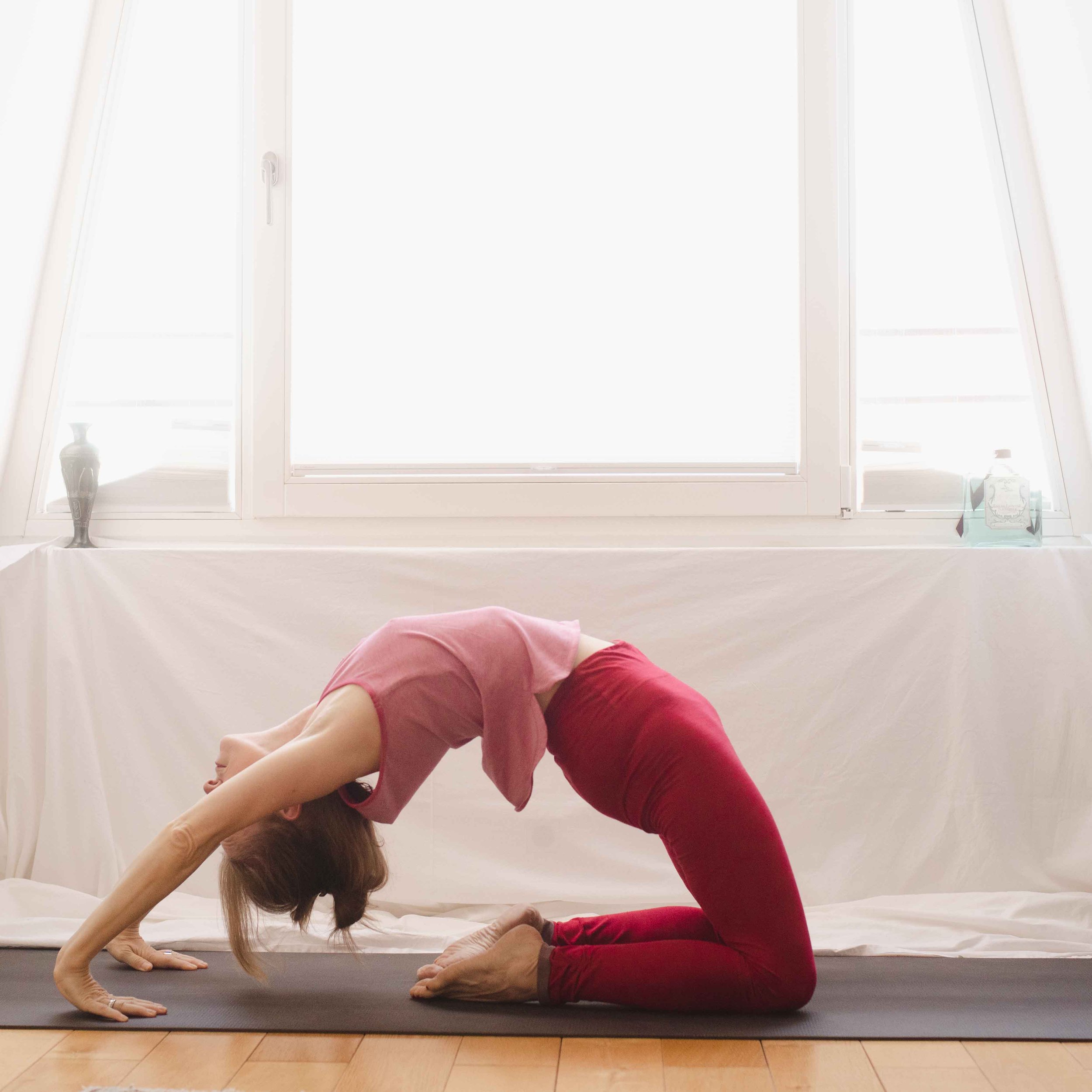Kapotasana, August 2022
This morning I slept too long. I had an appointment at 9:30 am, so the time for an Ashtanga Yoga practice was too short. It should be so. Sleep is important as well.
A plan is only an orientation and not written in stone. In the afternoon I don’t practice an Ashtanga Yoga series anymore. But I know so many sequences and asanas that I want to exercise that it’s easy to fill an hour. That’s what happened. At 3 pm I stepped on the mat and started with a warm-up. Quickly I focused on back bending exercises.
I took pictures.
My camera is like a pushing teacher. When the self-timer starts blinking I run to the mat. Most of the time I’m able to push my limits. Today I dropped back from a kneeling position into kapotasana. I haven’t done this for ages.
Since a decade minimum my hands try to reach the feet. 🦶 They don’t come closer. Now it’s too late to give up. Giving up is not an option either.
Some yoga teacher have kapotasana as a warm-up in a sequence. This makes me laugh hysterically. I mean reaching the feet with the hands when bending backwards is an advanced asana. I know a lot of people who have difficulties to reach the feet with their hands when they bend forward.
I sweated a lot during the practice. It’s warm here. The body is flexible in summer time.
Tomorrow I don’t have an appointment in the morning. Nothing will stop me to practice Ashtanga Yoga in the morning. When I dropped back into kapotasana today it’s very likely that I can drop back tomorrow as well. I’m ready to get surprised.
I’m looking forward to my yoga practice tomorrow.





